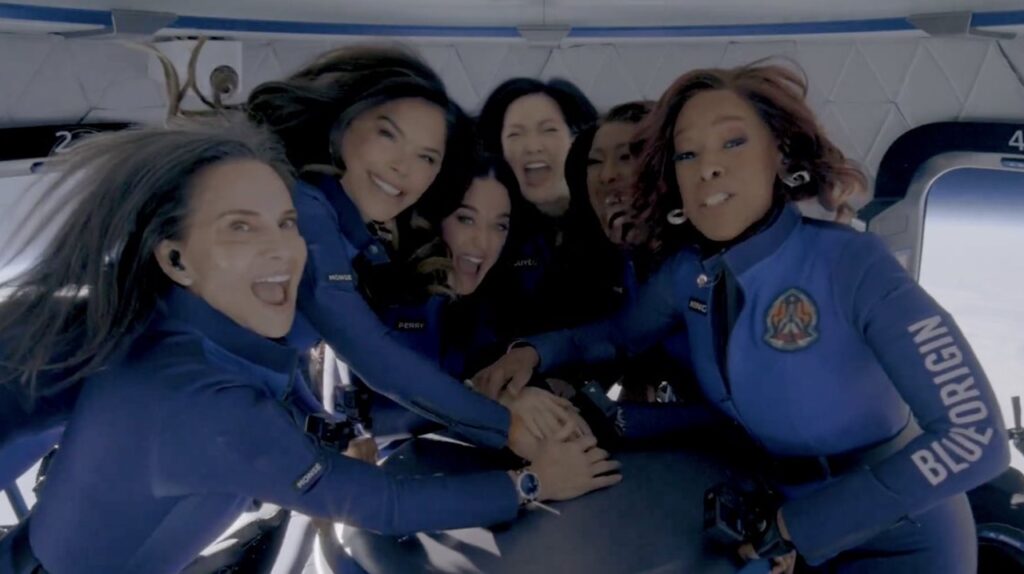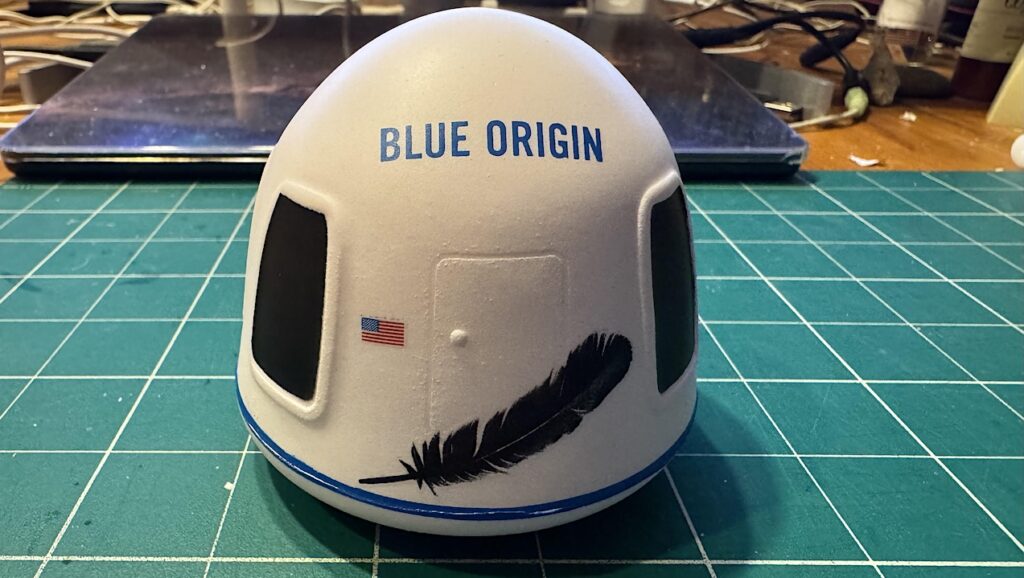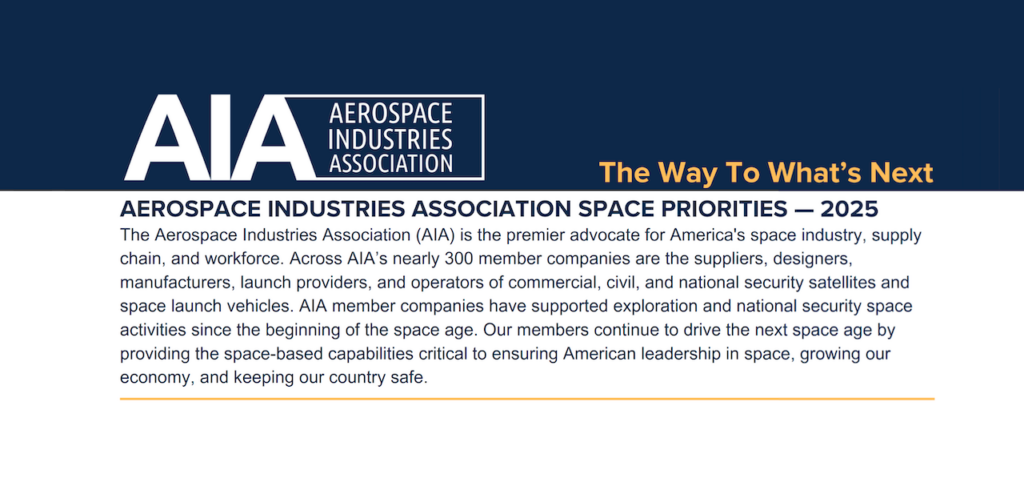ISS After 2025: Is CASIS The Solution Or The Problem?

 Keith’s note: Yesterday NASA held a briefing with Acting CFO Andrew Hunter. When asked about how NASA plans to operate the ISS after 2025 when funding by NASA will cease, Hunter had no answer. The only clue he offered was that CASIS would continue to be part of the NASA space station utilization plan until 2025. Somehow, between now and 2025, NASA claims that it will be handing over all of its operational responsibilities to some yet to be defined private sector entities. It would seem, therefore, by default, that NASA intends to use CASIS to develop the multi-billion dollar customer base that will take over U.S. operations on the ISS and that NASA would be just another customer. How anyone can expect CASIS to complete a task several orders of magnitude greater than the one that they have failed to accomplish thus far is baffling in the extreme. All you have to do is read recent GAO and NASA OIG reports to see that there is extreme doubt with regard to CASIS’ abilities.
Keith’s note: Yesterday NASA held a briefing with Acting CFO Andrew Hunter. When asked about how NASA plans to operate the ISS after 2025 when funding by NASA will cease, Hunter had no answer. The only clue he offered was that CASIS would continue to be part of the NASA space station utilization plan until 2025. Somehow, between now and 2025, NASA claims that it will be handing over all of its operational responsibilities to some yet to be defined private sector entities. It would seem, therefore, by default, that NASA intends to use CASIS to develop the multi-billion dollar customer base that will take over U.S. operations on the ISS and that NASA would be just another customer. How anyone can expect CASIS to complete a task several orders of magnitude greater than the one that they have failed to accomplish thus far is baffling in the extreme. All you have to do is read recent GAO and NASA OIG reports to see that there is extreme doubt with regard to CASIS’ abilities.
Of course, NASA has still refused to deliver the ISS Transition Plan mandated by law and due last year. Based on this budget briefing NASA clearly has no plan and they have only begun to work on it.
Did NASA Deliver The ISS Transition Plan To Congress Required By Law? Update: No, earlier post
I asked #NASA CFO what happens after 2025 if commercial users do not show up to pay ISS operating expenses. Does @NASA Abandon ISS? If so who owns U.S. assets on ISS if NASA not longer uses them? Answer: "I do not know the answer. We are starting to work on this" pic.twitter.com/Ldo6KNuCF9
— NASA Watch (@NASAWatch) February 12, 2018
|
|
NASA’s Management of the Center for the Advancement of Science in Space (CASIS), NASA OIG
“… With respect to crew utilization, between September 2013 and April 2017 CASIS was allocated 2,915 crew research hours on the National Lab, but CASIS-managed projects used only 1,537 (52.7 percent) of these hours. Although CASIS officials attributed the organization’s limited success in this area to three failed ISS resupply missions in FY 2015, given its performance to date, CASIS utilization rates for the National Lab will likely further diminish when NASA adds an additional crew member to the Station in late 2018.”
“… In its FY 2016 assessment memorandum, NASA noted that absent growth in the project pipeline, the crew utilization rate for three crewmembers could drop below 50 percent. NASA intends to increase the number of crew aboard the U.S. segment of the ISS from three to four in late 2018 and plans to allocate a portion of the additional crew hours available to CASIS who, in turn, will need to recruit additional users. Consequently, without sustained increases in the number of new and repeat users, CASIS’s crew time utilization could fall even further when the fourth crew member is added.”
“… Even though in recent years NASA has become more involved in measuring CASIS’s performance, the Agency still has not developed a performance strategy for the remaining 7 years of the agreement or provided quantifiable metrics by which to assess CASIS and help improve the organization’s performance.”
“… Despite CASIS’s recent progress, FY 2017 fundraising is still far below the amounts discussed in the original CASIS proposal. CASIS officials stated that they replaced the fundraising model in the reference model and original proposal with a sponsored program model, which focuses on obtaining external funding to directly support research and STEM projects. Officials explained that CASIS was not able to pursue all fundraising sources described in the reference model and proposal such as royalty fees, which were prohibited in the agreement, and the membership structure that was found to be unsuccessful.”
“… CASIS met only one of nine metrics related to outreach publicizing the unique benefits of using the National Lab to potential users, the White House, Congress, non-NASA Government agencies, commercial companies and researchers, media, kindergarten through grade 12 educators and students, and the general public.”
“… By 2024, NASA will have invested $196 million in CASIS. In our opinion, weaknesses in performance measurement and the lack of an overall strategy have created an environment in which NASA continues to accept incremental improvement rather than more tangible attainment of agreed-upon goals. Consequently, without significant change, CASIS likely will fall short of advancing NASA’s goal for a commercial economy in low Earth orbit. NASA needs to engage more substantively with CASIS and exercise more effective oversight of the cooperative agreement to clarify CASIS’s role in helping build a robust economy in low Earth orbit.”
– Earlier posts on CASIS









So simple. Instead of “giving” crew time to CASIS, AUCTION IT OFF; I bet Nanoracks, for example, can think of things to do with crew time if they’re allowed to buy it cheap and sell it for whatever they can get for it.
Please stop making sense.
The get about 2 hours a day and are using about an hour per day. USE IT OR LOSE IT… if they are not going to utilize those hours allow commercial firms more direct access. How about the Commercial Space Federation help manage rather than NASA
I hope people are seeing the portends and writing on the wall given history and all growing hurdles over the next 35 years. This could be the end of the US space program. A government headed towards bankruptcy. An aging population that has an insufficient youth base to pay for their maintenance. Another 100 million in the US and 2.5 billion on Earth, stretching resources (fresh water, food, etc.), jobs, pollution, war and climate change (mercury and methane released into oceans and atmosphere from permafrost melting) to unimaginable extremes. And everyone blindly expecting our technology or leaders will get us out of our predicaments. Where is anyone going to get the money to do these little side projects, like space exploration and science? And if CASIS did not have the answers on how to best utilize ISS since its inception, good luck with the future. So at ease, and return heads to the sand.
For the last nearly six decades I’ve heard people say we’re doomed for one reason or another. None of these calamities has ended the human race yet. The air is cleaner than when I was a kid. The water is cleaner. Food production has grown faster than the world’s population. We’re not adding EPA super-fund cleanup sites anymore. Wars are actually less frequent than last century. A number of diseases have been tamed. Technology has fixed many problems and will likely fix many more. In the last thirty years more people globally have risen out of poverty than any time in history. So excuse me for not sharing your pessimism. Paul Ehrlich would be proud of you.
It all depends on perspective. Check out “plastic islands” or Hawaii “cesspools” or Florida-Moscow-South Africa “fresh water” problems – to name just a very few. There are not less problems than before on any measurement scale. And I would love someone to prove me wrong on my predictions, but I’ve learned to not have a great deal of faith in human behavior from repeatedly measurable facts.
If your perspective is that the greatest enjoyment in life is finding the dark cloud around every silver lining, I guess you are enjoying life. It’s just not the way I choose to live.
I would not have such a dark perspective (based on historical fact and future probabilities) if the people running our country and NASA could substantiate and control their behaviors and check their egos. Everything boils down to basic psychological principles whether humans want to “believe” that or not.
boy, you’re a “glass empty” kind of guy !
Hope springs eternal.
35 years ago many were sure we were headed for a nuclear apocalypse, yet Shuttle was developed and flew through it all. I just saw two rockets land together in almost perfect synchronization like something out of a sci-fi novel. I’m pretty optimistic.
There are ample researchers who would be happy to fly payloads on the ISS, but the funding to do so ultimately has to come from NASA and is very limited. The ISS has enormous potential as a platform for Earth and space observation, for testing of thrusters for electrical propulsion, and for storage and transfer of propellants. But these applications are for basic research, which does not produce immediate profits, so turning it over to industry probably won’t help.
If I can bring us back to the topic…
Keith,
You made two faulty assumptions in your question: “how NASA plans to operate the ISS after 2025 when funding by NASA will cease”.
First, the Administration is saying that NASA is not going to operate ISS in the current mode after 2025. Perhaps someone else may, perhaps a partnership of someone else and NASA will jointly operate it in a different way, but the status quo with NASA in charge of and paying for everything, including Boeing’s sustaining engineering contract, will end.
They are forcing the transition at ISS and in LEO that everyone knows needs to happen, and doing so now so we can avoid a gap in U.S. LEO spaceflight. Congress tried to force this issue in the NASA Transition Act and NASA dodged. The Administration is to be commended for putting a marker on the 2025 calendar.
Second, the Administration has not said that all funding of LEO spaceflight will end, including ISS utilization, cargo and crew delivery, and (newly) some shared-cost partnerships in developing privately-owned and -operated LEO infrastructure adjoining or separate (or even in differently inclined orbits) from ISS. A senior space policy official declared yesterday that “we will keep buying those crew and cargo services.” They may want to revector some of them to cislunar space,
but they will continue supporting ISS (or its commercial replacements) with crew and cargo. They are not just spashing ISS with nothing to replace it and proposing to pocket $4 billion for exploration.
“Perhaps” “maybe” “they may want” … they had a chance to answer these questions on Monday and they did not. They have refused to provide the ISS Transition Plan to Congress mandated by law. They have no idea what it means to stop funding ISS other than they are not going to fund it. And when asked what happens if the commercial funding needed to take over from a halt in NASA funding is not forthcoming they said that they “do not know”.
How is this an unreasonable response? Nobody knows. As they so often do, NASA is walking an indeterminate road, trying to define a way forward.
Simply defining parameters will be a huge success.
because by now they should know (having been tasked to plan for it). The minimum passing grade would’ve been “we’re working on it … this is what we’ve got so far …”. Others have noted above that there are plenty of unfunded experiments; this means to me there are plenty of non-experiments.
If the money were just not available in the agency budget (which seems to be the situation with NSF and Arecibo) one could find it disappointing but perhaps unavoidable. In this case NASA (ordered much of the time by Congress) put immense amounts of funding into Shuttle and ISS assembly with the implicit goal of doing research and development in LEO, then funded only a tiny fraction of the proposed research while creating a completely new program to reuse now 40-year-old Shuttle and ISS technology to build a completely new launch system and a new ISS slightly farther away. It might be possible to sell the US share in ISS to China, other than that I don’t know of any answer except to say that without funding the program will be terminated.
I’m imagining the headlines. Remember when Mitsubishi bought Rockefeller Center, and Sony bought Columbia Pictures?
The outcry was long and hard, but *nothing* compared to the fear we have of China.
Are they starting this 7 years early in the hope of riling people up to support it?
Lease it to private industry as a jumping off point for interplanetary spacecraft. I’m not sure how much use it would be to SpaceX as their BFR Mars concept is ultimate spacecraft, able to traverse launch, entry, re-launch, and re-entry.
Let the NSF take it. It’s national lab, the NSF can run it like the base in Antarctica. Contract support from SpaceX, Boeing, SNC, etc. NSF could take over science operations @ MSFC. Hire a contractor to do mission control tasks from a non-government location.
It has become apparent to anyone who is following the activities on ISS that the facility and crew are being seriously under-utilized. This is a real shame given the $100 billion and 35 years it has taken to get to this point. Lately if you notice the “YEAR OF SPACE EDUCATION gets top billing, although it seems there is no actual plan or program, just a series of astronaut Q&A periods with whatever schools NASA can wrangle into the program. CASIS is a part of the problem, but it is not the entire problem. NASA did serious planning-and funding-for ALL of its prior human spaceflight programs to ensure there was utilization and that is still how operation of unmanned exploration missions are managed. Somehow, human space has gone awry. Just like the bigger picture lack of a strategic plan for NASA and exploration, the current tactics are no actual plan for why they are doing this, just put astronauts on board and figure out what to do with them on the fly. You really have to wonder, given the big dollars spent in the past and being spent today, where is all that money going if almost nothing goes to utilization.
CASIS has been very successful – at drawing down fat paychecks for a handful of picked employees. “Commercial” is easily the most overused and usually incorrectly applied buzzword at NASA since the success of COTS, and its used to paper-over all manner of shenanigans.
I find it interesting how NASA continually finds a scape-goat for any systematic issues with their work. CASIS was created in order to overcome the incompetencies of NASA and now that the company hasn’t been able to perform to NASA’s expectations, our government’s space program is blaming everyone but themselves.
In my opinion, CASIS has done a fine job, especially considering the unrealistic goals they were expected to meet. NASA has been overly optimistic and pawned off this impossible mission so they could have a convenient excuse for failing themselves. We can’t trust NASA to regulate a type of space utilization that they have been unable to accomplish themselves. I don’t think the government’s bureaucratic systems, which most certainly include NASA, and by association, CASIS, should be leading this. We need to truly integrate the commercial sector and stop relying on this system that clearly isn’t working.
CASIS hasn’t failed. They were given an unrealistic job. NASA has failed from the start and I am done watching them undercut others for their mistakes. I am not an engineer with a masters and a doctorate, but we need to use common sense to see what is so clearly wrong with this program.